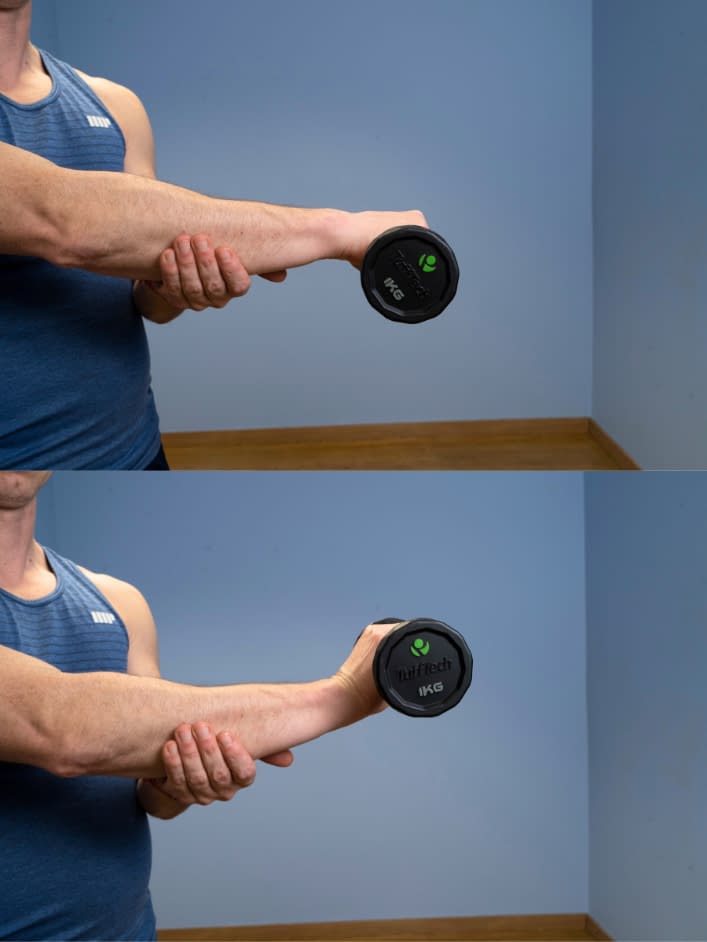Radial Tunnel Syndrome Advanced Exercise Programme
Aim to perform this programme a minimum of once per day unless prescribed otherwise. As with any new exercise, start slowly (repetitions as able) and build up as you are able within the guidelines below.
Pain should not exceed 4/10 whilst completing this exercise programme.
1. Radial nerve glide
- Start with your hand down by your side, place your thumb across your palm and wrap your fingers over your thumb. Then bent the wrist forward.
- Now fully twist your shoulder inwards so that if your thumb was sticking out it would point behind you.
- Lift your shoulder out to the side until you feel symptoms.
- Hold for 2-5 seconds and then return to the start position by reversing the movements.
2. Wrist extension with weight
- Sit or stand with your arm straight out in front of you with the palm of your hand facing the floor, holding a small weight.
- Bend your wrist so the back of your hand moves towards you.
- Hold this position for 5 seconds.
- Relax your hand back to starting position.
3. Drop and catch (Scaption)
- Stand and hold a small weight out at shoulder height over a soft surface.
- Try not to lift straight out in front of you or out to the side, instead go in between these positions as shown in the picture.
- Drop the weight and immediately catch it with the same hand.
We recommend consulting a musculoskeletal physiotherapist to ensure exercises are best suited to your recovery. If you are carrying out an exercise regime without consulting a healthcare professional, you do so at your own risk. If you have any concerns whilst completing these exercises, please contact a healthcare professional.
More Plans
The basic programme is the earliest stage of rehabilitation and so it serves as an introduction to exercise and movement. It is designed to maintain the flexibility of the soft tissues of the forearm and wrist, as well as to increase the mobility of the radial nerve through nerve gliding exercises.
- 0
- 1
- 2
- 3
- 4
- 5
- 6
- 7
- 8
- 910
The intermediate plan is the next progression of the basic plan and the focus changes to firmer stretches for the forearm and wrist to improve nerve, tendon and muscle flexibility/mobility. It also places more emphasis on strengthening the forearm and wrist muscles (especially those that rotate the forearm) using relatively little equipment, such as a resistance band or a weight.
- 0
- 1
- 2
- 3
- 4
- 5
- 6
- 7
- 8
- 910


